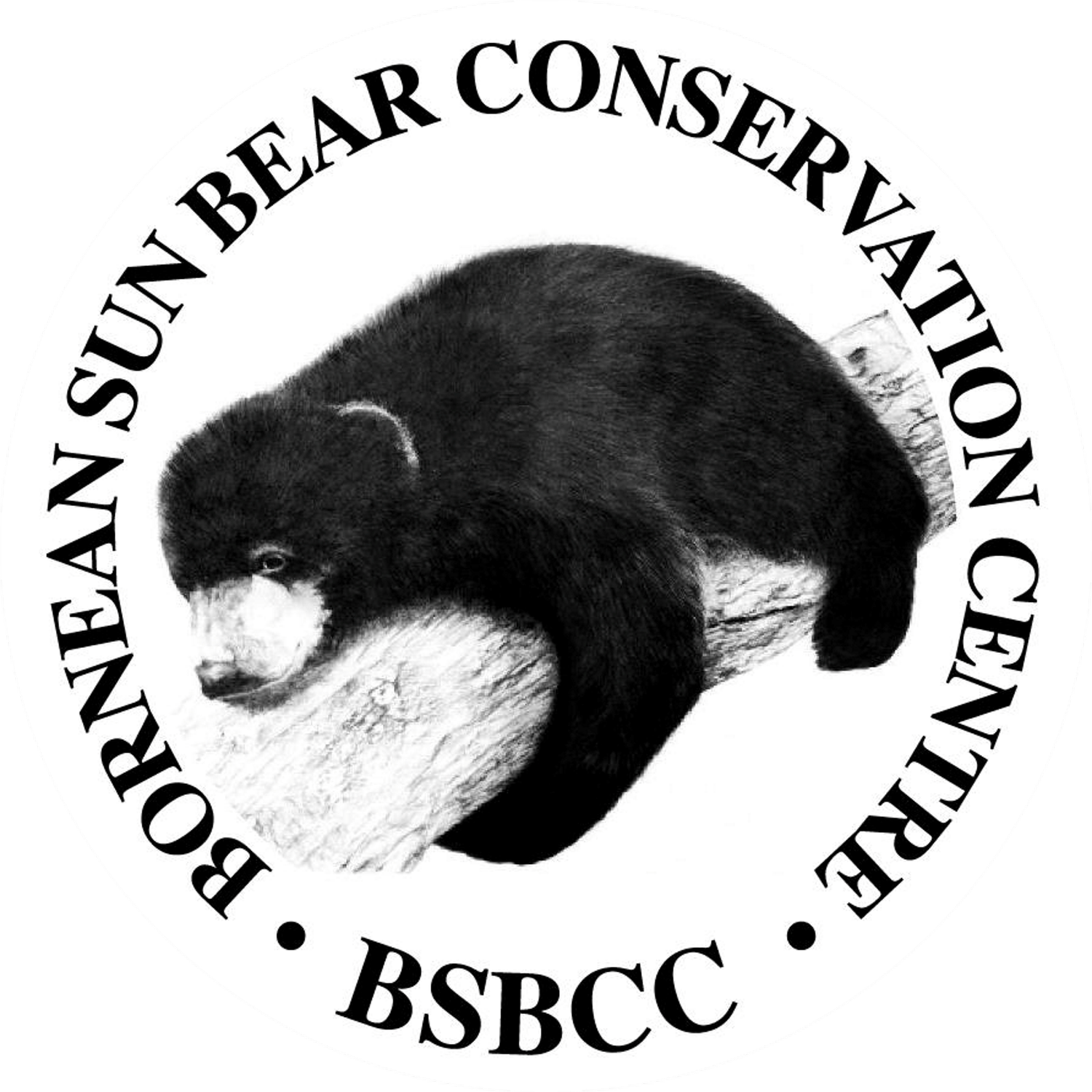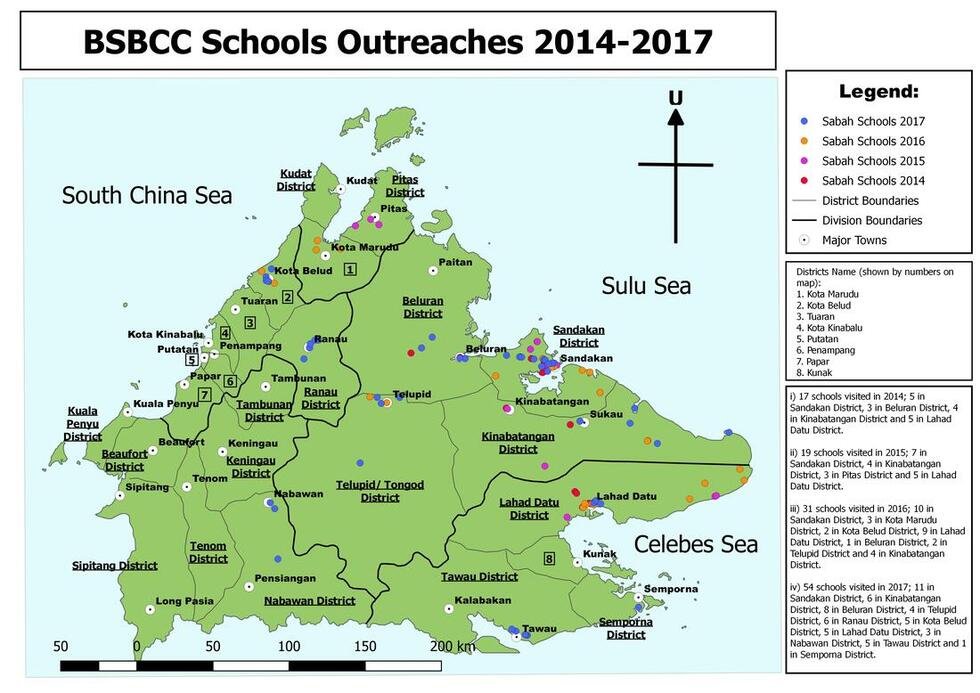Our Work - 5 Pillars of BSBCC
To achieve our aims in sun bear conservation, BSBCC’s work relies on five fundamental pillars: welfare, rehabilitation, education, research and eco-tourism.
Animal Welfare
A Better Life
BSBCC is currently home to 43 rescued sun bears. Sun bears in the wild face many threats. All bears at our Centre are orphaned and/or ex-captive bears, often found in unnatural conditions, with inadequate diets and no stimulation. We provide rescued sun bears with a better life.
Bear Welfare
At our centre in Sepilok-Kabili Forest Reserve, we reintroduce bears into their natural habitat and provide the largest forest enclosures of any sun bear Centre. The care we provide is the closest a captive sun bear can come to life in the wild.
Our expert researchers and rehabilitators work with the bears to develop the skills necessary - foraging, climbing trees, nest building and self-defence - for independence in the forest. For cubs, our experts become surrogate mothers until the bears gain their independence. We constantly develop "enrichment activities" to improve welfare and encourage species specific behaviour.
Rehabilitation to the wild
Our Centre is the only in the world that offers potential release candidates the chance to naturalise to forest life before they are released. Our research and rehabilitators closely monitor each bear and identify potential release candidates and work to develop their skills and encourage their independence.
Sadly, sometimes our bears are too traumatised for release to be possible, for these bears BSBCC provides a dignified permanent home.
Aerial View of the Centre showing the Visitor Centre, Forest Enclosures and Bear House 1 and 2.
Medical Checkup on one of our bears.
Rehabilitation
1.When A Bear Arrives
All bears that arrive at the Centre are given a thorough health check by our vets. Individual characteristics are recorded.
2.Quarantine
To prevent risk of disease to other bears, a new arrival will be kept separately for the 30 days until test results are known.
3.Making introductions
Wild sun bears are mainly solitary, but to encourage the positive development of the bear behaviour we introduce them to each other (with the same age). This is done slowly and groups are monitored.
4.Bear behaviour
Our staff and volunteers work to encourage typical bear behaviour that equips bears for forest life. This includes activities such as tree climbing, nest building, and foraging.
5.Enrichment
To encourage bear-like behaviour and increase well-being, enrichments are used. This can involve food types, structures, smells and other activities.
6.Providing a home
We aim to provide a humane comfortable, and stimulating environment for captive sun bears over both the short- and long-term. Sadly, some bears are too traumatised to be released into the wild. For these bears BSBCC provides a permanent home.
7.Release
We identify potential release candidates for re-entry into the wild. We work hard to encourage their independence and monitor their progress for this pivotal moment in their lives.
Our vet carrying out procedure to one of our bears.
Sun bear learn their self-defense skills from "play-fight" that need to be developed in the wild.
Our vet carrying out procedure to one of our bears.
We provide space for sun bears to act on their natural instincts, such as nest building.
Research
Sun bears are the least researched bear species in the world. We believe on-going research is key to this species' protection.
Difficult terrain, low numbers, and their shy and elusive nature have historically made research difficult. As sun bear's range is exclusively within developing countries, they are also a low priority in government research policies.
BSBCC provides the capacity to study captive bears up-close and in their natural environment. This facilitates research on captive sun bears and enables preparation for research on wild sun bears.
CEO and Founder, Siew Te Wong’s own research directly informed the creation of BSBCC. Siew Te Wong conducted the very first ecological study of wild sun bears in the rainforest of Sabah, Malaysia Borneo in 1998. Since then, his career has focused on the research and ecological conservation of the Malayan sun bear and employed what has been discovered to help save the species through care of bears directly and improvement of their profile.
UMS Malaria Study at BSBCC
Research partners
Fruit feeding trials to understand the role of sun bears in seed dispersal. Ongoing Efforts to Understand the Role of Large-Bodied Seed Dispersers in Tropical Asia
- The University of Nottingham, Kingsborough Community College and BSBCC
Thermoregulation and Activity Profile of Sun Bears in Captivity at Bornean Sun Bear Conservation Centre
- University of Sunshine Coast and BSBCC
Developing a Sun Bear Conservation Research Action Plan towards sustainable re-introductions of Bornean sun bears into the forest
- University of Portsmouth and BSBCC
Landscape characteristics associated with the population genetic structure, of sun bears (Helarctos malayanus) in peninsular Malaysia
- Sunway University and BSBCC
Ex-situ and In-situ Conservation Approach for the Malayan Sun Bear (Helarctos malayanus)
- Griffith University, Danau Girang Field Centre and BSBCC.Management of Malayan sun bear in Bornean Sun Bear Conservation Centre, Sepilok Sandakan Sabah, with emphasis on deworming programme
- Universiti Putra Malaysia (UPM) and BSBCCSupporting threatened sun bears by enhancing rehabilitation and behavioral assessment efforts of captive animals in Borneo
- San Diego Zoo and BSBCC
Enhancing volunteer tourism’s positive effects on orangutan (Pongo pygmaeus) and sun bear (Helarctos malayanus) conservation and the volunteer experience in Malaysia and Indonesia
- Sabah Wildlife Department, Oxford Brookes University and BSBCC
The adaptation and movement patterns of reintroduction of rehab sun bear in lowland tropical rainforest of Sabah
- Sabah Wildlife Department, Danau Girang Field Centre, Oxford Brookes University and BSBCC.
Observations in behavioral patterns of Bornean sun bears (Helarctos malayanus euryspilus) in rehabilitation center tropical rainforest reserve in Sabah, Borneo
- Oregon State State University and BSBCC
Education
We believe education both locally and internationally is crucial to preserve sun bears and their habitat for generations to come.
We provide educational resources at:
Outreach programmes in schools
Outreach programmes in plantations
Outreach programmes in schools
Creating wildlife ambassadors for the future
We believe engaging with young people on environmental issues is crucial to creating the wildlife ambassadors of the future.
We promote awareness of sun bears where it is needed most, locally. Knowledge of animal welfare and conservation is often underdeveloped in Malaysia. This is particularly true in rural communities where interactions are most common, increasing the issue. This is why in 2013, we began working with pupils and teachers in kindergarten, primary and secondary schools.
Dr Wong giving a talk to students about the sun bear.
Schools reached in 2014-2017
Our partners
We collaborate with HUTAN Kinabatangan Orang-utan Conservation Programme, and Sabah Wildlife Department, to give a broad understanding of local species, conservation of the rainforest and animal welfare in a broader context.
What we discuss
Sun bear characteristics and behaviour - what makes them unique.
Threats - deforestation, commercial poaching, and the pet trade.
BSBCC's work to rescue, care for and rehabilitate sun bears to the wild.
Animal welfare - domestic and captive.
Local laws - In Sabah, Borneo, the penalty for maiming, killing or capturing a sun bear or owning a sun bear product is a minimum fine 50,000 MYR and a maximum 5 years jail sentence.
Local myths and fears and how to coexist with wild animals.
We provide a talk, Q&A session and exhibition to involve students.
Coloring activity for kindergarten.
Outreach programmes in plantations
We also collaborate with other NGOs in Sabah to visit plantations and talk to workers. It is common for workers to see or interact with wildlife while on a plantation but there is often little knowledge of what the right course of action is. We discuss local laws and penalties that protect wild species. We encourage ways to help the animal, how to stay safe and to report certain animals to the wildlife department. This also gives us the opportunity to raise awareness of endangered species and the threats they face.
If you would like further information on our outreach programmes in plantations, please contact us.
If you see or hear a captured sun bear contact us or your local authorities immediately.
An outreach programme to community village.
Outreach session to plantation workers community.
Ecotourism
Ecotourism is one of the major economic boost in Malaysia, most particularly in Sabah which is considered as the prominent hotspot of ecotourism in the country.
Striving hard to shape a better future for the Bornean sun bear, BSBCC also plays its role in ecotourism or namely on nature tourism and conservation tourism as the promotion of the Bornean sun bear conservation effort attracted thousands of tourists from many countries around the globe to come and visit Sabah for its famous biodiversity, which is also including the Bornean sun bear.
This is undoubtedly an excellent double-pronged strategy in which BSBCC helps in generating the state's and country's economy via nature tourism and conservation tourism and also spreading the words and awareness on the plight of the sun bear through education about them.
The view at 2nd Observation Platform.
Staircase to the 1st Observation Platform, with information boards installed.














